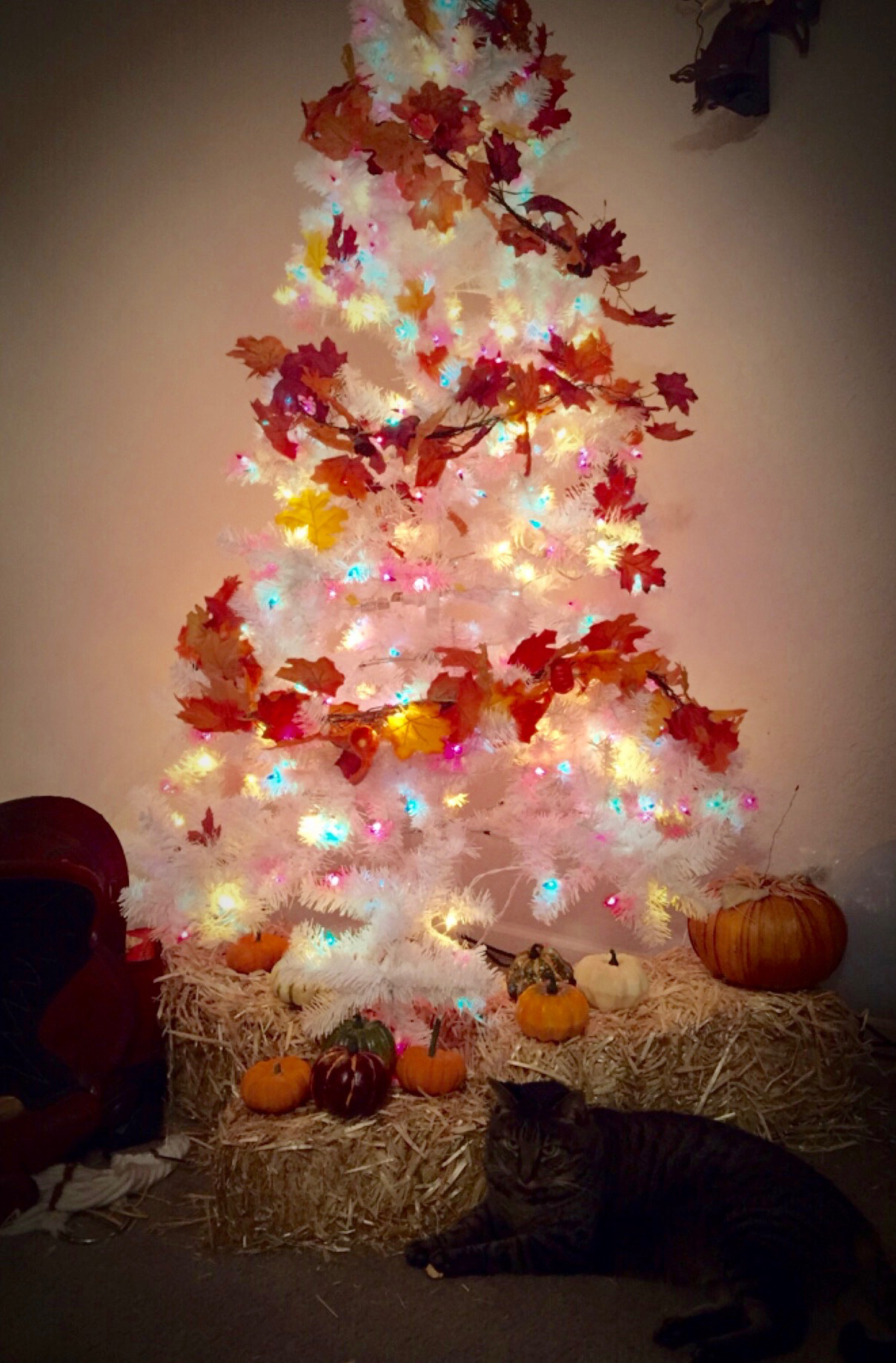HOME
The Natural Horseman – Celebrating Fall

By Steve Stevens
We have started a new tradition in the Stevens house the last two years. We put up a cute white fall Christmas tree to celebrate all the hard hours put in during the summer. It is a celebration of the changing of the seasons—the sun coming up a little later in the day and going down a little earlier in the evening.
We celebrate the stillness that comes with the air of fall and the turning colors of the trees.
And even the black birds that fill the Walmart parking lot as the sun falls.
For us, fall leads to our daughter’s birthday and the holidays of Halloween and Thanksgiving that are so fun to experience when you have young children.
This is my favorite time of the year to ride and train horses, especially watching the sky change colors in the early evening.
The Native Americans believe that everything comes full circle: the circle of life, the wind, the earth and the seasons. I try to remind myself of this when working horses in a round pen. How we use the round pen tool to work horses is an endless circle. No matter the horse, age, experience—we continue to make circles and like the seasons, if we grow in that circle we can make changes.
We must grow to continue in the circle. We and the horse must learn to flow through the change of seasons. If we break the flow, we can break that circle of life and growth. I don’t want to sound too out there, but if you have seen as many horses as I have that have circled around me in my life, you would understand how I can be a little horse crazy.
All good horsemen know that much like in our human life, we must ride many circles to achieve straightness. At the end of the day we are looking for a straight horse and a straight line to happiness.
When riding in circles, remember how those circles connect us to the circle of life and the circle of our lives and the circle of the seasons.
Many blessings to you all. Love, ride and dream through the seasons of the fall.
Farm & Ranch
Acorn Toxicity

By Barry Whitworth, DVM, MPH
With the prolonged drought, most pastures in Oklahoma end up in poor condition. With the lack of available forage, animals may go in search of alternative foods.
If oak trees are in the pastures, acorns may be a favorite meal for some livestock in the fall. This may result in oak poisoning.
Oak leaves, twigs, buds, and acorns may be toxic to some animals when consumed.
To read more, pick up a copy of the November edition of North Texas Farm & Ranch magazine, available digitally and in print. To subscribe by mail, call 940-872-5922.

Farm & Ranch
Silver Bluestems

By: Tony Dean
There are a handful of grasses on North Texas grazing lands ranchers need to know, not because they are highly desirable, but rather because they are not of much value. I call them “decom” plants, which is am acronym for “Don’t Ever Count On Me.” Silver bluestem is a “decom” grass.
Silver bluestem is a perennial which grows in all areas of Texas. It can survive in almost all soil types, and in full sun conditions or in semi shade. It grows up to three feet tall and is easily recognized with the presence of the white fuzzy seed head. Also, one of the identifying characteristics of Silver bluestem is a bend in the stems at each node, causing the plants to take on a rounded shape as they mature.
To read more, pick up a copy of the November edition of North Texas Farm & Ranch magazine, available digitally and in print. To subscribe by mail, call 940-872-5922.

Farm & Ranch
Meanwhile Back At The Ranch

By: Rayford Pullen
Fall is here which means winter is closing in on us and before we officially get into winter, we need to make sure our factories are either producing or will be producing in a few months.
We have been pregnancy testing our cows this fall and if they are not bred or nursing a calf, we are bidding them adios. With annual costs somewhere between $900.00 and $1,000.00 per cow, those cows not producing a live weaned calf are costing us quite a bit.
To read more, pick up a copy of the November edition of North Texas Farm & Ranch magazine, available digitally and in print. To subscribe by mail, call 940-872-5922.
-

 Country Lifestyles2 years ago
Country Lifestyles2 years agoScott & Stacey Schumacher: A Growth Mindset
-

 Country Lifestyles8 years ago
Country Lifestyles8 years agoStyle Your Profile – What your style cowboy hat says about you and new trends in 2017
-

 HOME8 years ago
HOME8 years agoGrazing North Texas – Wilman Lovegrass
-

 Equine1 year ago
Equine1 year agoThe Will to Win
-

 Country Lifestyles5 years ago
Country Lifestyles5 years agoAmber Crawford, Breakaway Roper
-

 Outdoor9 years ago
Outdoor9 years agoButtercup or Primrose?
-

 Country Lifestyles8 years ago
Country Lifestyles8 years agoJune 2016 Profile – The man behind the mic: Bob Tallman
-

 Country Lifestyles8 years ago
Country Lifestyles8 years agoDecember 2016 Profile, Rusty Riddle – The Riddle Way





